Addiction is a pervasive issue affecting communities everywhere. Recent headlines have brought attention to the tragic deaths of celebrities like Aaron Carter, Mac Miller and Juice WRLD, all succumbing to substance abuse. Their struggles and untimely deaths underscore the urgent need for comprehensive addiction prevention programs.
Heroin abuse is not confined to the celebrity world; it has infiltrated small, rural communities across the U.S. Time magazine noted in February 2014 that the surge in heroin use is driven by increased supply and reduced cost, reaching populations previously considered unlikely to abuse the drug.
While this guide focuses on empowering K-12 educators with prevention strategies, it’s important to acknowledge that addiction is a complex disease. If you or someone you know is currently struggling with substance use, professional support and addiction treatment programs are available to guide the path to healing. Rehabs like Origins Texas Recovery offer comprehensive care for individuals and families.
Reach out today to see if Origins Texas Recovery is the right fit for you or a loved one. Our expert care and compassionate support are here to guide your path to healing.
Are We Glorifying Addiction?
The unintended possible consequence of these stories gaining such widespread media coverage is the possible glorification of drug use in the minds of kids and teens. Yes, these stories can help to raise awareness about the dangers of drug abuse, but what impact are they really having on each individual child? The answer depends on how these circumstances are addressed by educators and parents, and whether adults are crafting valuable conversations around these events.
It’s not just movie and television stars who abuse heroin. Unfortunately, heroin has become a widely abused drug even in small, rural communities across the U.S. “Fueled by a boom in supply and a decline in cost, heroin use is up around the nation and spreading to segments of the population once considered unlikely users,” according to a February 2014 article in Time magazine.


Gateway Drugs Pave the Way to Heroin Use
There’s been a rise in the abuse of prescription opiates, which in many cases progresses to heroin use as the user becomes tolerant, requiring larger and larger doses in order to achieve the same effects. Prescription painkillers are more likely to be abused by kids in schools due to easy accessibility; many kids simply steal the pills from a parent’s or grandparent’s purse or medicine cabinet. Others buy them from other kids who have stolen them from a friend or relative.
Other users are prescribed opiate medications to manage pain symptoms resulting from a variety of conditions, and the individual starts to purchase the pills on the street after the prescription runs out. Regardless of the reason a person starts abusing prescription opiates, the possibility of eventually progressing to heroin use is very real.
Prescription Medication, Designer and Synthetic Drugs are Prevalent
Opiates aren’t the only drugs with high addiction potential. Cocaine remains widely available on the streets of most communities, and synthetic alternatives to cocaine and marijuana are becoming increasingly common. Other substances prone to abuse and addiction include prescription anxiety medications, ADD/ADHD medications like amphetamine salts, manufactured drugs such as crystal meth, and designer drugs like Ecstasy and Molly.
Education is Key to Addiction Prevention
Who is responsible for providing addiction prevention education to children and teens? The answer is everyone: parents, teachers, media, community groups, and law enforcement agencies. Effective addiction prevention requires a multi-faceted approach that equips students with the tools to resist peer pressure, make healthy choices, and develop sound decision-making skills.
Educators play a pivotal role in this effort, impacting students at an early and impressionable age. They help students understand the dangers of drug abuse, identify alternatives, and develop essential communication skills to navigate peer pressure.
The National Health Education Standards (NHES), developed by the Joint Committee on National Health Education Standards in collaboration with several leading health organizations, provide a framework for health education, including addiction prevention. The organizations involved include:
- American Cancer Society
- American Association for Health Education
- American Public Health Association
- American School Health Association
- The Society of State Leaders of Health and Physical Education
Incorporating addiction prevention within these standards creates a clear educational pathway that builds on foundational concepts as students progress through school.
The Path to Addiction Prevention Education
In grades K-3, students begin developing self-awareness, learning to seek help and information by asking questions, and evaluating the trustworthiness of people they encounter, as outlined in Learning to Live Drug Free: A Curriculum Model for Prevention by the U.S. Department of Education.
In grades 4-6, the focus shifts to teaching students facts about drugs and developing interpersonal communication skills for peer interactions. Students also learn about policies, regulations, and laws related to drug abuse, such as school policies and criminal laws.
In grades 7-8, the curriculum reinforces prior learning by assessing students’ knowledge of drug facts and their ability to evaluate the credibility of information sources. Students also develop skills to resist peer pressure and understand the consequences of drug use for themselves, their families, communities, and society at large.
These competencies are further strengthened in grades 9-12, ensuring that students are well-prepared to make informed decisions and avoid substance abuse as they enter adulthood.
Lesson Plans: Understanding Health, Addiction and Behaviors
The initial step in addiction prevention education involves fostering a comprehensive understanding of health, addiction, its causes and consequences, and related behaviors. Students delve into the different types and categories of drugs, learn to distinguish between proper use and misuse of prescription medications, and comprehend how various drugs impact the body and brain.
At higher grade levels, students examine the physiological processes involved in addiction, exploring why individuals with addiction persist in harmful behaviors despite adverse outcomes.
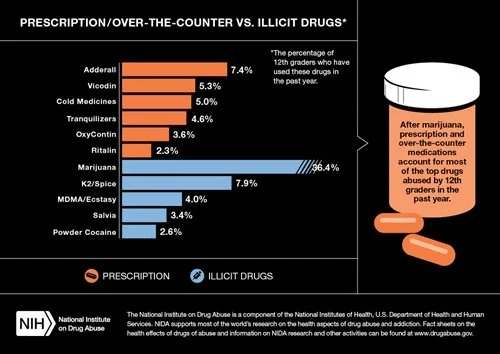
Grades K-4
Teaching drug abuse and addiction prevention to students in grades K-4 can be challenging. Educational experts generally agree that children should not be exposed to detailed information about certain drugs at a young age. Instruction at this level focuses on basic topics that children might have encountered outside the classroom, such as alcohol and tobacco.
Kids, Alchohol and Advertising – Lesson 1: Messages About Drinking
Media Smarts, Canada’s Centre for Digital and Media Literacy, provides numerous lesson plans addressing media influences on society for students of all grade levels. This particular lesson is aimed at fourth graders. Students identify the various groups that disseminate messages about alcohol and examine how these messages shape young people’s attitudes and perceptions. The lesson begins with a brainstorming session where students generate words associated with “beer” and create a mind map of individuals and organizations that communicate alcohol-related messages. (Source: Media Smarts)
Brain Power! The NIDA Junior Scientists Program
The Brain Power! NIDA Junior Scientists Program is an extensive unit designed for students in grades 2-3. It educates students about the brain, emphasizing the importance of protecting it and how drugs like nicotine and inhalants can cause damage. The unit consists of six modules, accompanied by a teacher’s guide, parent’s guide, and a videotape, featuring hands-on activities and a variety of instructional resources to create an engaging learning experience. (Source: National Institute on Drug Abuse)
The lesson “What Do Drugs Do to the Body?” is adaptable for students across different grade levels. It teaches students about the harmful effects of drugs on various parts of the body. For younger students, teachers can modify the lesson by spreading discussions on the harmful effects of drugs over several days and incorporating a poster-creation activity. In this activity, students use materials provided by the teacher to create posters illustrating the negative effects of drug abuse. (Source: EducationWorld)
Grades 5-8
In grades 5-8, students are more exposed to real-world scenarios and media influences, allowing educators to address more sensitive topics. At this stage, students explore the effects of various drugs on the body and brain, the consequences of both short- and long-term use, and the connection between drug abuse and overall health.
“Mind Over Matter” is an extensive unit designed for students in grades 5 through 9. This series of lessons focuses on the impact of drug abuse on the body and brain, providing insights into the effects of specific drugs. Students learn how substances like hallucinogens, opiates, and tobacco affect the brain, the short- and long-term consequences of their use, and the mechanisms of addiction. (Source: NIDA for Teens (National Institute on Drug Abuse)
Rx for Understanding: Be Smart About Prescription Drugs (Grades 5-8)
This unit offers standards-based, cross-curricular lessons aimed at middle school students. The lessons can be used as a comprehensive unit or individually to supplement other curricula. With five lesson plans for grades 5-6 and five for grades 7-8, this program ensures a targeted, grade-specific learning experience. Students examine prescription drug safety, the proper use, misuse, and abuse of medications, and complete an application-based culminating project. (Source: National Education Association, Health Information Network)
“The Best Birthday Present Ever”
This straightforward lesson plan focuses on tobacco addiction and media influences, targeting students in grades 7 through 9. It includes a single class period followed by a homework assignment. Students gather essential facts about tobacco addiction, including the ingredients in cigarettes, tobacco advertising, its impact on the body, and strategies for quitting. They then write a persuasive letter to a loved one, encouraging them to quit smoking. Additional resources and activities are provided to extend and enhance the lesson. (Source: PBS.org – In the Mix)

Grades 9-12
Students in grades 9-12 build upon their previous knowledge with advanced studies of the body’s physiological responses to various drugs, the addiction process, treatment options, ethical considerations, and the broader impacts on the community.
The Brain: Understanding Neurobiology Through the Study of Addiction
This module integrates addiction prevention education with science and biology. It includes a series of detailed lessons on brain function, the impact of drugs on normal brain activity, the short- and long-term effects of drug use, and the mechanics of addiction. Students gain insights into the specific brain changes that occur with addiction, emphasizing the role of science in understanding and treating diseases like addiction. This module encourages critical thinking about the interplay between knowledge, choice, behavior, and health. (Source: National Institutes of Health – National Institute on Drug Abuse, NIH Office of Science Education/SEPA)
Rx for Understanding: Preventing Prescription Drug Abuse
This resource features 10 sequenced lesson plans designed as a project-based mini-unit. It is flexible enough to be used across multiple subjects, either as a primary resource or as a supplement to broader units on substance abuse or health. The unit focuses on three main themes: the proper use, misuse, and abuse of prescription drugs. It includes both inquiry-based and project-based lessons, where students develop communication strategies and messages based on their research into local community needs. (Source: National Education Association, Health Information Network)
Bioethics and the New Science of Addiction
In this lesson, students explore bioethical issues related to addiction, such as the development of addiction vaccines, the medical and cultural use of illicit drugs, and the intersection of mental illness and drug addiction. Using the Decision-Making Model alongside the Bioethics Scenario: Addiction Vaccine, or another ethical dilemma chosen by the class, students evaluate the ethical, legal, and social implications of these issues. For instance, the discovery of the brain’s reward pathway and genetic factors in addiction has led to potential treatments like vaccines, but these innovations also raise significant ethical concerns. (Source: Teach.Genetics)
Lesson Plans: External Influences and Resisting Peer Pressure
Addiction prevention education also highlights the external influences affecting drug use, decision-making, and health outcomes. Students explore the impact of peers, media, family, school, and community on their choices.
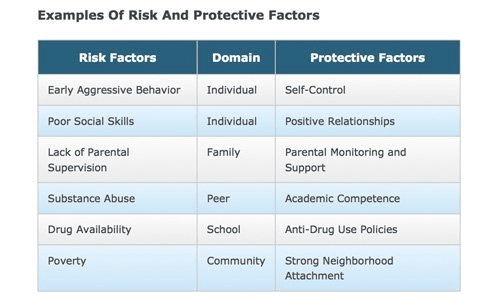
Grades K-4
In grades K-4, students are often exposed to television commercials and other media forms. At this stage, they investigate media influence and the power of peer pressure. It is also essential to develop trust-evaluation skills, enabling students to discern between trustworthy adults and those they should be cautious of, empowering them to make informed decisions.
Alcohol and Advertising
Targeted at third graders, this 50-minute lesson teaches that alcohol is a drug, detailing the short- and long-term effects of alcohol use and abuse, and laws related to underage drinking, purchasing alcohol, and drinking and driving. Students analyze advertisements for alcoholic beverages, discussing how advertisers make alcohol seem appealing and the negative societal impacts of such advertising. (Source: Robert C. Byrd Health Sciences Center – School of Public Health)
People We Trust
While knowing the difference between safe medications and harmful drugs is crucial, students in grades K-4 must also learn to identify trustworthy individuals. Students create a list of people they know, such as doctors, nurses, teachers, friends, older relatives, and store clerks, and determine whether each person is safe to take medication from. This group activity is followed by a worksheet exercise.
Part of the KidsHealth.org Personal Health Series for grades 3-5, this lesson helps students understand the influence of peers and role models on behaviors and choices. It teaches students to distinguish between positive and negative peer pressure. The lesson can focus on drug and alcohol use or be used in a broader context. Students engage in activities responding to mock peer pressure scenarios and develop strategies to resist negative influences. (Source: KidsHealth.org)
Grades 5-8
Students in grades 5-8 will develop skills to resist peer pressure, understand the impacts of drug abuse on friends, family, and society, and strengthen their personal values and beliefs regarding drug use and health-related choices.
Alcohol, Tobacco, & Other Drugs (ATOD)
Students in grades 6-8 will learn about the short- and long-term negative effects of drug abuse and develop effective refusal techniques to resist peer pressure. After group discussions on the facts and consequences of alcohol, tobacco, and other drugs, as well as the benefits of making healthy choices, students will work in small groups of five or fewer to design and create posters. These posters will cover topics such as resisting peer pressure, the effects of drug use on families and relationships, and other related subjects. (Source: PECentral.org)
Deadly Highs
Designed for students in grades 6-8 but adaptable for any grade level, “Deadly Highs” helps students understand the different types and classifications of drugs. They review statistics and fact sheets, learn about the short- and long-term consequences of drug use, and develop personal strategies for substance abuse prevention and addiction control. (Source: Discovery Education)
This lesson plan is suitable for students in grades 7 through 12 and spans two 50-minute class periods. Students receive a crossword puzzle with relevant terminology and a list of reliable drug abuse prevention websites. They solve the crossword by researching the correct answers using the provided resources. The information gathered is then used to create a brochure, which is distributed school-wide to promote addiction prevention. (Source: PBS.org – In the Mix)
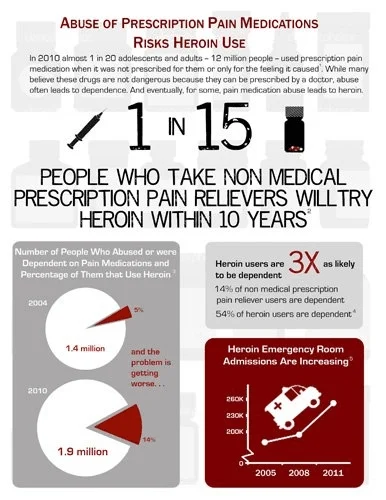
Grades 9-12
Students in grades 9-12 will advance their understanding of drug effects and the impacts of abuse and addiction, applying their knowledge to community service and advocacy. At this stage, students delve deeper into research and statistics, engaging in activities that strengthen their knowledge by applying principles to real-world scenarios in their local schools and communities.
In this engaging four to five-class period lesson, students participate in a mock talk show in small groups. They research different types of drugs, the addiction and recovery processes, and the impacts of drug addiction on family, friends, work, school, and society. Students also explore techniques for exerting positive peer pressure and resisting negative influences. (Source: PBS.org – In the Mix)
Risky Business
This lesson plan, suitable for grades 6-12 with minor adjustments for comprehension, covers standards across multiple disciplines. Students evaluate research linking movie-viewing restrictions among teens to their alcohol and drug use. They then conduct a similar study within their own schools by creating and distributing surveys to assess drug and alcohol use and movie-viewing habits among their peers. (Source: The Learning Network – The New York Times)
Topics Related to Drug Abuse and Addiction [PDF]
This teaching guide features multiple posts from the Sara Bellum Blog, providing teens with the latest research on drug abuse and addiction. Suitable for both middle and high school students, this resource can supplement existing curricula or serve as a framework for new lesson plans. The articles include discussion guides with activities like writing blog posts, developing presentations, creating social media messages, and poster projects. Topics cover drugs of abuse, peer pressure, stress and stigma, and mental health related to addiction. (Source: National Institute on Drug Addiction (NIDA))
Just Think Twice: Teacher’s Guide for High School Students
Developed by the Drug Enforcement Administration (DEA), Just Think Twice is a series of seven addiction prevention modules tailored for high school students. Each module corresponds with a specific section of the Just Think Twice website. Students are encouraged to think critically about the messages they hear about drugs from the media and peers and make healthy decisions. The guide includes numerous resources, suggestions, and extension activities. (Source: Drug Enforcement Administration (DEA))
Lesson Plans: Making Healthy Choices and Avoiding Risks
Understanding the harmful effects of drug use and addiction, along with resisting peer pressure, societal, and media influences, forms the bedrock of addiction prevention education. Students must also develop strategies for making healthy choices, avoiding risky behaviors, and coping with stress in positive ways. By engaging in thoughtful discussions and interactive learning activities, students will shape their own beliefs and attitudes about drug abuse and addiction, recognizing how healthy choices lead to positive outcomes.
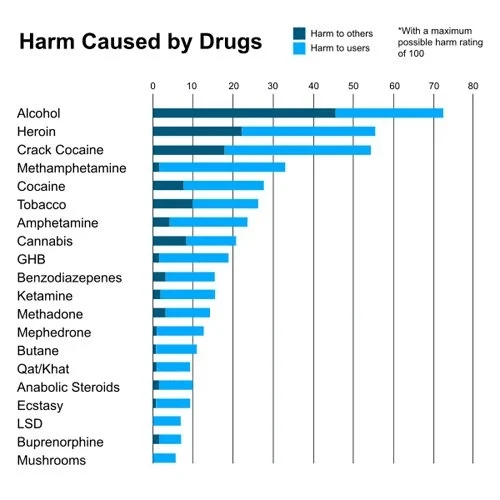
Grades K-4
Instilling positive health habits in students should begin early. In grades K-4, students start to develop a sense of self and identify with role models in their home, school, and media environments. At this stage, they learn to distinguish between good and bad choices, beginning to form their own belief systems and attitudes.
Grade 3 Lesson Plans: Positive Health Habits
This series of six 45-minute lessons can be used individually or as a complete unit. Originally designed for the Alberta Education Program of Studies, 2002, these materials are easily adaptable to U.S. educational standards with little to no modification. Students will learn the importance of factual knowledge, self-understanding, identifying role models, developing refusal skills, and finding healthy alternatives to drug use.
This straightforward lesson plan offers students a healthy strategy for coping with stress, making it an excellent supplement to drug education programs or related lessons addressing addiction. Students identify stress-inducing activities and experiences, brainstorm healthy stress-reduction methods like taking a walk or listening to music, and discuss the importance of responsible actions. This lesson directly supports addiction prevention by promoting alternative coping mechanisms instead of turning to drugs. (Source: Utah Education Network)
Designed for students in grades 2-3, this lesson helps students recognize the harmful effects of smoking cigarettes, improve decision-making skills, and clarify their personal values and attitudes about tobacco use. Through class demonstrations and worksheet activities, students reinforce these concepts. Teachers can expand the lesson to discuss the effects of other drugs, providing students with options to create related posters as a culminating activity. (Source: TeacherVision)
Grades 5-8
In grades 5-8, students apply their knowledge of drug abuse consequences to real-world scenarios through role-playing, strengthening their fact-based decision-making skills. They gain an understanding of the external and internal influences on behavior, recognizing that their choices have significant outcomes that impact various aspects of their lives. This process enhances their self-awareness and confidence to make independent decisions despite external pressures. Students will identify traits of addictive personalities and risk factors, distinguish influencing factors, and name alternative choices in response to role-playing and hypothetical scenarios.
Facts Into Action
“Facts Into Action” is part of Scholastic’s Heads Up series, delivering real news and relevant discussions about drug use and its effects on the body. This lesson presents students with scenarios in a role-playing format, providing critical facts about drugs and fostering smart, fact-based decision-making skills. Students will learn practical techniques for making informed decisions and build the confidence to resist peer pressure. (Source: Scholastic Heads Up)
The Science of Healthy Behaviors
Targeted at students in grades 7-8, this lesson explores how behavior can be studied through a series of inquiry-based activities. Students examine the influences on behaviors and their health outcomes, gaining an understanding that behaviors have both short- and long-term effects on health. This lesson connects drug use (behavior) to health consequences and emphasizes that addiction is a disease that can be treated. (Source: NIH Office of Science Education/SEPA)
Cycle of Addiction
Aimed at students in grades 6-8, this lesson highlights the influence of family and peers on decision-making. Through group discussions and handouts, students develop an understanding of the cycle of addiction. They are presented with various scenarios and asked to critically analyze influencing factors and their impacts. Finally, students create lists of characteristics of individuals likely to turn to drugs and those who choose healthier coping mechanisms. (Source: Discovery Education)
Grades 9-12
In grades 9-12, addiction prevention education reinforces earlier concepts and fosters positive self-esteem. Students investigate societal pressures, peer pressure, and stigmas related to addiction, and evaluate current treatment programs for their effectiveness. They develop problem-solving skills and apply their knowledge to create community education resources promoting drug-free lifestyles.
Substance Abuse Prevention
The Youth Leadership Academy (YLA) offers a comprehensive Substance Abuse Prevention curriculum adaptable for different grade levels. Using a variety of instructional techniques, students understand society’s role in influencing drug use, assess the risks and consequences of drug and alcohol use, and develop problem-solving skills and self-esteem to cope with pressures and remain drug-free.
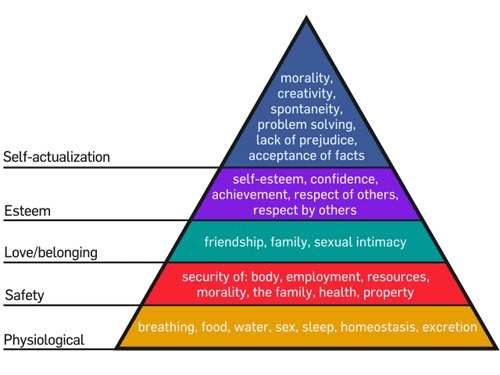
This interactive lesson is suitable for students in grades 6 through 12. Students form small groups and choose a topic related to drug abuse and addiction prevention, such as drinking and driving, saying no to drugs, healthy alternatives, available resources, or the impacts of drug abuse on family and work. They create messaging based on 10 essential, researched facts and videotape their own public service announcements. This lesson spans up to five class periods and includes all necessary resources, such as printable student worksheets for fact research, a grading sheet with criteria, and a student script sheet. (Source: PECentral.org)
Special Treatment
In this lesson, students evaluate the effectiveness of current treatment programs addressing teen substance abuse. They discuss their perceptions of substance abuse prevalence among teens locally and globally, read an article with recent statistics on teen drug abuse and addiction, and present ideas for improved treatment programs. Students design publicity materials to advertise their proposed programs to teenage drug users. This lesson integrates concepts from economics, mathematics, and media studies, offering numerous options for enhancement and extension (Source: The New York Times Learning Network)
Additional Addiction Prevention Lesson Plan Resources for Teachers
Numerous non-profit advocacy and education groups offer resources for classroom use, many of which align with content standards across various disciplines and target specific grade levels. These resources provide up-to-date statistics and research findings related to drug abuse and treatment, helping teachers keep their lessons accurate and current.

Addiction prevention education is challenging for grades K-3, and finding suitable instructional resources for this age group can be difficult. This is due to the widely accepted standard that terms like marijuana and other drug-specific names should not be introduced to students until they reach a certain age.
The PEERx Educators Guide is an extensive resource for teachers, offering background information, statistics, research on prescription drug abuse and addiction, classroom activities, and example lesson plans for grades 5-9 or 6-9. Students can create their own “Choose Your Path” interactive videos depicting common scenarios, the choices involved, and the consequences. The guide also includes various educational articles with discussion guides, making it a comprehensive source of drug education information. (Source: PEERx, National Institute on Drug Abuse (NIDA) for Teens)
Preventing Substance Abuse: An Elementary School Guide
This guide outlines a thorough substance abuse education program for elementary students, designed to complement the PBS series Moyers on Addiction: Close to Home (videos available for order). It provides strategies for creating a supportive classroom environment, intervention tips, ways to engage parents, and multiple activities for different grade levels. This guide is a valuable resource for building a foundation for addiction prevention and promoting healthy behaviors in elementary students. (Source: Thirteen.org)
Positive Action is an evidence-based program that can be implemented on both small and large scales, suitable for individual classrooms or as a school-wide addiction prevention initiative. Kits are available by grade level, ranging from $320 to $400, for elementary and secondary education levels. Supplemental kits address bullying, conflict resolution, and other topics, and include resources for training educators, engaging parents, and involving the community. The Positive Action framework teaches students sound decision-making skills and reinforces the idea that positive choices lead to a good self-image. Outcomes include improved academic achievement and reductions in problem behaviors. (Source: Positive Action)
National Registry of Evidence-Based Programs and Practices (NREPP)
NREPP is a comprehensive database of evidence-based programs, interventions, and curriculum models related to substance abuse, mental health, and wellness. It features several hundred resources designed for various settings, each accompanied by descriptions of research and outcomes. Each resource has been independently reviewed and rated before inclusion. Users can sort the options by setting, age, topic, and other criteria. (Source: Substance Abuse and Mental Health Services Administration)
Youth Risk Behavior Surveillance System (YRBSS)
The Youth Risk Behavior Surveillance System continuously monitors risk behaviors among youth and adolescents, providing a reliable source of regularly updated statistics on trends among children and teens. The system tracks six types of health-risk behaviors, including alcohol and drug use, tobacco use, and other behaviors. (Source: Centers for Disease Control and Prevention (CDC))
When Prevention Isn’t Enough: Pathways to Professional Addiction Treatment
While comprehensive prevention education is vital, we understand that addiction is a complex and often chronic disease. Despite diligent efforts in schools and homes, some individuals may still develop a substance use disorder. In such cases, professional addiction treatment becomes a critical step toward healing and long-term recovery.
At Origins Texas Recovery, we believe in a holistic and individualized approach to treating substance use disorders. Our programs are designed to address the multifaceted challenges of addiction, offering a range of evidence-based therapies and compassionate support. We understand that addiction impacts not just the individual, but also their families, which is why we offer dedicated family programs to facilitate healing for everyone involved.
Origins Texas Recovery provides specialized treatment for various addictions, including opioid addiction, alcoholism, and issues with prescription drug abuse, often topics that are part of prevention discussions. Our dedicated team of experts utilizes a blend of clinical and medical approaches, including Cognitive Behavioral Therapy (CBT), Dialectical Behavior Therapy (DBT), and a strong foundation in the 12-Step philosophy, to guide individuals through detoxification, residential treatment, and into sustained recovery.
If you or a loved one is struggling with addiction, please know that you are not alone, and help is available. Contact Origins Recovery for help. Our commitment extends beyond prevention to providing comprehensive, life-changing treatment.
Substance Abuse Prevention Resources
The Substance Abuse and Mental Health Services Administration (SAMHSA) offers a comprehensive resources section with information on 18 health and prevention related organizations and groups. Each organization’s website provides valuable information on substance abuse prevention, healthy decision-making, and other pertinent topics, many with educational resources suitable for classroom use. (Source: Substance Abuse and Mental Health Services Administration)
*This article is intended solely for informational purposes and should not be regarded as a replacement for professional medical advice. While the content has undergone Origin Texas Recovery’s thorough editorial review process, it may not necessarily represent the opinions, policies, or procedures of our facility or staff. We strive to ensure that our content is medically accurate; however, treatments evolve, and we cannot guarantee the current accuracy or reliability of the information provided. For medical emergencies, call 9-1-1 immediately.

